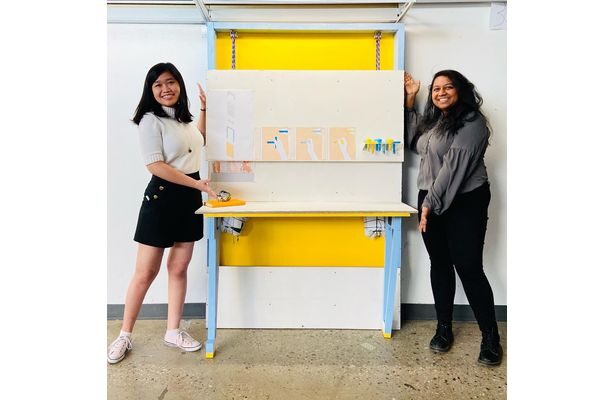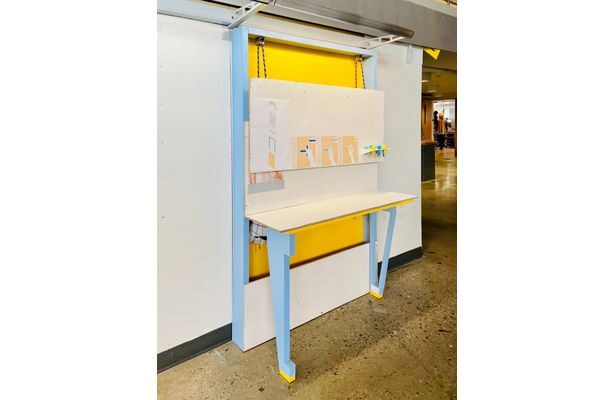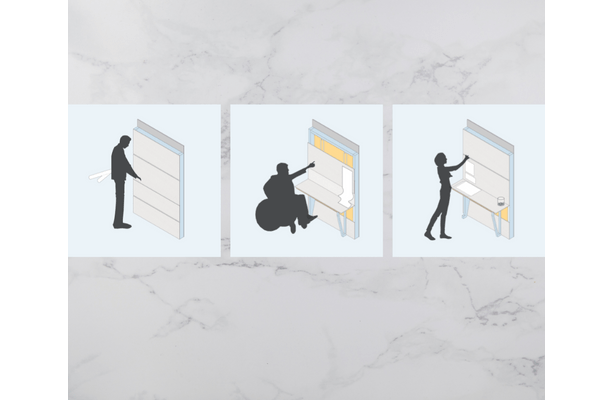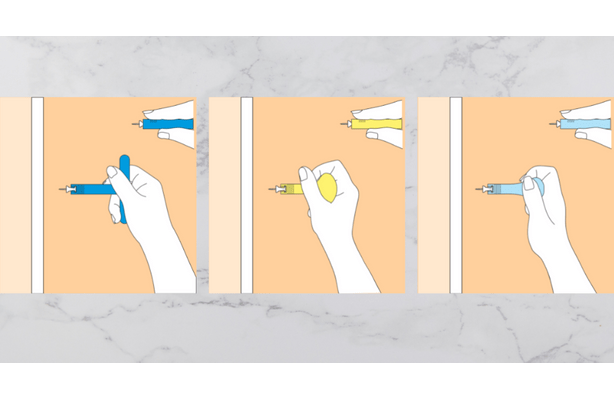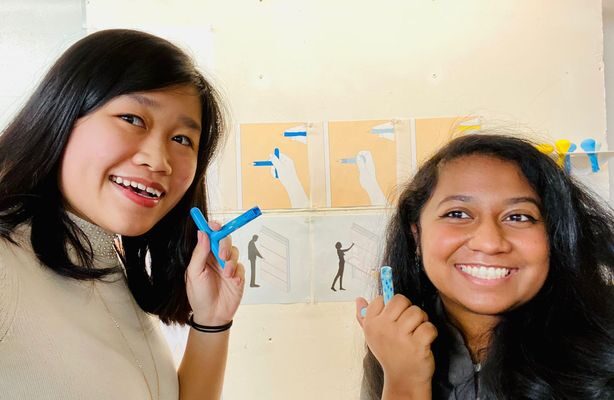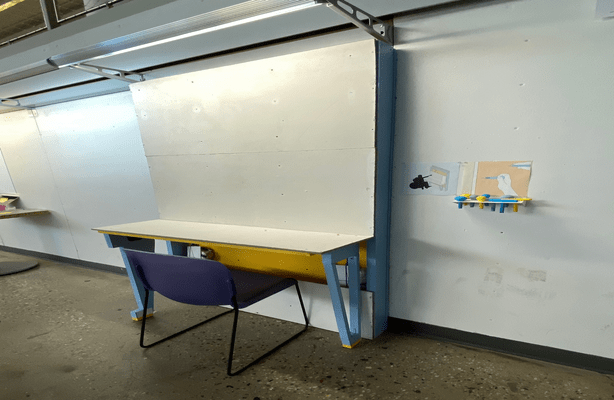News
Students Think About Accessibility at Spitzer
In professor Dexter Ciprian’s Spring 2022 advanced studio, Defiant Bodies, the Spitzer building was critically analyzed to identify spaces of inclusion and exclusion.
The Pin-Up areas were discovered to be unintentionally exclusionary, privileging individuals of a certain height and degree of ability. As a central experience in the career of architecture students, one should be able to reach this final step in the design process by independently presenting their work on the wall. As an assignment for the studio, Caroline Ho and Labiba Nazrul designed and installed a new desk design on the third floor. The desk is made up of all sorts of moving parts, intended to make pinning up designs easier for disabled students.
The Pinnacle Board was created to bring equity to the act of pinning. The board is divided into multiple moving parts, including a height adjustable top panel and a central plane that can be pulled out to serve as a desk and model stand. The multiple functions ultimately aid all users, whether they are able-bodied or not, for they accommodate for problems every student experiences- including the struggle of finding space to hold presentation materials. Hand-held pinning devices were also invented to ease the discomfort that comes from using push pins to secure paper drawings to the wall for presentations. Differently shaped handles were designed to support a variety of hand types. Together, the Pinnacle Board and pinning devices work to reimagine an accessible way to physically present our architectural works.
It is a marvelous addition, and we are excited to feature the new desk and the students who brought it to life.


